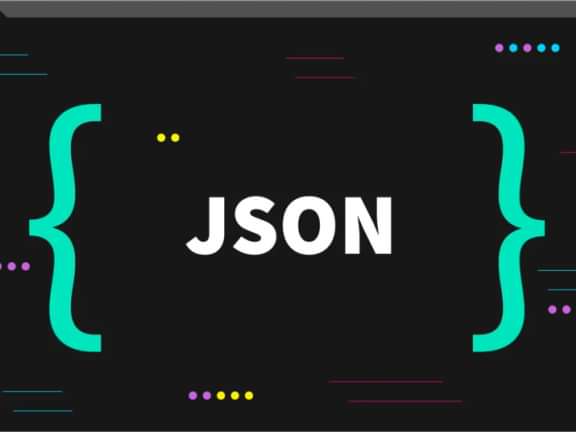SEO Strategies for Oregon Businesses: Boosting Your Website's Visibility
SEO unlocked success, outranked rivals, danced digitally victorious!

SEO Success Unlocked!
In the vast and ever-expanding digital landscape, having a stunning website alone is not enough to drive business success. With millions of websites competing for attention, your online presence can easily get lost in the crowd. This is where Search Engine Optimization (SEO) comes to the rescue. SEO is the art and science of making your website more visible to search engines like Google, Bing, and Yahoo, which, in turn, increases the chances of attracting organic traffic from your target audience. In this comprehensive guide, we'll delve into the world of SEO and explore proven strategies to elevate your business website's visibility and secure a prominent spot in search engine results. Whether you're a startup or an established enterprise, mastering these SEO techniques will empower your business to reach new heights and connect with your ideal customers like never before. Let's embark on this journey of SEO discovery and unlock the key to online success!
Keyword Research: Unveiling the Right Words
In the vast expanse of the digital realm, where millions of websites are vying for attention, discovering the right words that can unlock your business's online success becomes paramount. Welcome to the world of Keyword Research, a pivotal aspect of Search Engine Optimization (SEO) that allows businesses to identify the most relevant and high-impact keywords to target. Understanding and harnessing the power of keyword research can be the key to driving organic traffic, increasing visibility, and connecting with the right audience. In this comprehensive guide, we will delve into the intricacies of keyword research, exploring its significance and uncovering effective techniques that can catapult your website to the top of search engine results.
Why is Keyword Research Essential?
Imagine your website as a treasure trove of valuable content, and keywords are the treasure map leading users and search engines to that content. Keyword research is the compass that guides businesses to unearth the most relevant words and phrases people use when searching for products, services, or information related to their industry. By discovering these keywords, businesses can optimize their website's content, making it more attractive to search engines like Google, Bing, and Yahoo, and positioning themselves in front of their target audience.
Effective keyword research not only enhances visibility but also helps businesses understand their audience's needs and desires. It unveils the language users speak, enabling you to tailor your content to resonate with them. Whether you're running an e-commerce store, a local business, or a multinational corporation, understanding what words matter most to your potential customers can be a game-changer for your online success.
Digging into the Research Process
The first step in keyword research is to brainstorm relevant topics and themes that align with your business offerings. Put yourself in the shoes of your ideal customers – what are they likely to search for when seeking products or services you provide? Utilize your industry knowledge and customer insights to generate a list of potential keywords.
Next, take advantage of various keyword research tools available in the market. Google's own Keyword Planner is a popular choice, providing valuable insights into search volume, competition, and related keywords. Other tools like SEMrush, Ahrefs, and Moz Keyword Explorer offer robust data to refine your list further.
Long-tail Keywords: Uncovering Hidden Gems
While generic keywords may have high search volume, they also come with intense competition. Here's where long-tail keywords shine. Long-tail keywords are more specific phrases that usually have lower search volume but are highly targeted and have less competition. For instance, instead of targeting "shoes," consider "best running shoes for women with flat feet." By focusing on long-tail keywords, you can attract users with a higher intent to convert and optimize for a more niche audience.
Competitor Analysis: Learning from the Best
A clever trick in keyword research is to analyze your competitors' keyword strategy. Identify your top competitors and observe the keywords they are ranking for. Tools like SEMrush and Ahrefs allow you to perform competitor keyword analysis, granting insights into their high-performing keywords and potential gaps in their strategies.
Creating a Target Keyword List
With the research complete, it's time to refine and prioritize your list. Select keywords that strike a balance between relevance, search volume, and competition. Aim for a mix of both high-competition head keywords and low-competition long-tail keywords. Consider the search intent behind each keyword – are users seeking information, looking to make a purchase, or seeking local services?
Your target keyword list should serve as a roadmap for optimizing your website's content. Incorporate the chosen keywords strategically into your website's meta tags, headings, and content to improve its relevance and search visibility.
On-Page Optimization: Mastering the Art of Relevance
In the ever-evolving digital landscape, merely having an aesthetically appealing website is not enough to thrive. To truly shine in the competitive online realm and secure a prominent place in search engine results, businesses must become proficient in the art of on-page optimization. This vital component of Search Engine Optimization (SEO) involves fine-tuning your website's content, meta tags, and headings to align seamlessly with targeted keywords. The essence of on-page optimization lies not only in impressing search engines but, more importantly, in connecting with your audience, driving organic traffic, and elevating your business website's visibility. Within this comprehensive guide, we will explore the significance of on-page optimization and unveil effective strategies that will empower you to achieve relevance and excellence in the digital world.
The Significance of On-Page Optimization
Imagine on-page optimization as the foundation of your website's SEO efforts. While off-page factors like backlinks and social signals play a crucial role in search engine rankings, on-page optimization is the pillar that supports your content's relevance to users and search engines alike. When executed effectively, on-page optimization enhances your website's chances of being discovered by users who are actively seeking what your business has to offer.
Search engines, like Google, prioritize delivering the most relevant and valuable content to their users. On-page optimization empowers you to communicate to search engines the essence of your content, allowing them to understand the context and relevance of your pages in relation to specific keywords and topics.
Crafting Compelling Title Tags and Meta Descriptions
Title tags and meta descriptions are vital on-page elements that significantly impact click-through rates and search engine rankings. A well-crafted title tag is not only descriptive but also enticing, encouraging users to click on your link. A page title like, "The Best Oregon SEO Company in Portland" would enhance your CTR compared to, "SEO Company" because it's targeted and isn't vague. Include your primary keyword in the title while maintaining a natural flow to attract both search engines and human users.
The meta description, although not a direct ranking factor, plays a crucial role in showcasing the content's relevance to search queries. It serves as a concise summary of what users can expect on your page, encouraging them to visit your website. Including relevant keywords in the meta description can help boost the page's visibility in search results.
Optimizing Content for Relevance
Content is king, and on-page optimization revolves around creating high-quality, valuable, and relevant content. Start by identifying the primary keyword you want your page to rank for, and then craft content that revolves around that topic.
Ensure that the primary keyword appears in the headline and the first paragraph of your content. However, avoid keyword stuffing, as this can harm your rankings and deter readers. Instead, focus on using related keywords and synonyms naturally throughout the content.
Break your content into sections with descriptive subheadings. This not only improves readability for users but also allows search engines to understand the structure of your content and its relevance to various topics.
Image Optimization: The Visual Language of SEO
Images play a crucial role in enhancing the visual appeal of your website. However, they also present an opportunity for on-page optimization. When using images, ensure that you give them descriptive alt text that includes relevant keywords. This alt text not only improves accessibility for visually impaired users but also helps search engines comprehend the content of the image.
Additionally, compress images to reduce page load times, as site speed is a ranking factor for search engines. Fast-loading pages not only contribute to better rankings but also improve the overall user experience, leading to higher engagement and lower bounce rates.
The Role of Heading Tags
Heading tags, like H1, H2, H3, etc., are essential for both users and search engines to understand the structure and hierarchy of your content. Properly formatted heading tags provide clarity and organization to your content, making it more readable for users.
When optimizing heading tags for SEO, incorporate relevant keywords into some of the headings, particularly the H1 tag, which holds the most significance for search engines. However, prioritize user experience over SEO and ensure the headings remain natural and coherent.
User Experience: The Core of On-Page Optimization
User experience is a critical factor that search engines consider when ranking websites. If users find your website difficult to navigate, slow-loading, or filled with intrusive ads, they are likely to leave quickly, leading to high bounce rates. Search engines interpret high bounce rates as a sign of poor user experience, which can negatively impact your rankings.
Ensure that your website is responsive and mobile-friendly, as an increasing number of users access the internet via mobile devices. Intuitive navigation, clear calls-to-action, and easily accessible information contribute to a positive user experience.
Link Building Strategies: Building Bridges to Authority
On major search engines where competition for online visibility is fierce, link building emerges as a fundamental pillar of effective Search Engine Optimization (SEO). Link building is the art of acquiring relevant and authoritative backlinks from other websites to bolster your website's credibility and search engine rankings. By building bridges to authority through strategic link acquisition, businesses can navigate the intricacies of the internet, securing a favorable position in search results and attracting a steady stream of organic traffic. In this comprehensive guide, we will delve into the significance of link building, explore its impact on SEO, and reveal proven strategies to help you build authoritative connections and propel your website to the top of search engine rankings.
Understanding the Power of Backlinks
Backlinks, also known as inbound links or incoming links, are hyperlinks that direct users from one website to another. Search engines perceive backlinks as a vote of confidence, signaling that other websites find your content valuable and trustworthy. The more high-quality and relevant backlinks your website earns, the more search engines perceive your site as an authority in your industry, subsequently improving your rankings in search results.
However, not all backlinks are equal. The quality and authority of the linking website play a pivotal role in determining the impact of the backlink on your SEO efforts. A backlink from a reputable and authoritative website carries more weight than several backlinks from low-quality or spammy sources.
Creating High-Quality Content: The Foundation of Link Building
At the heart of any successful link building campaign lies the creation of high-quality, valuable, and shareable content. Content that educates, entertains, or solves a problem for your target audience is more likely to earn backlinks organically. Invest time and effort into producing content that showcases your expertise and positions your website as a go-to resource in your niche.
Great content attracts natural links from other websites, as people are more inclined to link to resources they find useful and informative. Additionally, well-crafted content encourages social sharing, exposing your website to a broader audience and increasing the potential for backlinks.
Guest Posting: Sharing Knowledge and Gaining Authority
Guest posting is a popular and effective link building strategy that involves creating and publishing content on other websites within your industry or niche. By contributing valuable content to authoritative platforms, you not only gain exposure to a new audience but also earn a valuable backlink to your website.
When engaging in guest posting, focus on reputable websites with an audience that aligns with your target market. Ensure that your guest posts offer genuine value and avoid promotional language that may turn off readers. Providing valuable insights and actionable tips will not only build your authority but also entice readers to explore your website for more.
Content Outreach: Forging Valuable Partnerships
Content outreach involves reaching out to other website owners, bloggers, and influencers within your industry to introduce your valuable content and seek potential link opportunities. Building relationships with these individuals can lead to collaboration opportunities and organic backlinks from authoritative sources.
When conducting content outreach, personalize your messages and demonstrate that you are genuinely interested in contributing value to their audience. Avoid mass emails and focus on building authentic connections, which can lead to long-term link-building partnerships.
Resource Link Building: Showcasing Your Expertise
Resource link building involves creating comprehensive and authoritative content that serves as a valuable resource for others in your industry. This could include creating in-depth guides, tutorials, infographics, or research studies. By crafting content that is both unique and highly informative, you increase the likelihood of other websites linking to it as a valuable reference.
Remember to promote your resource content actively through social media, email marketing, and content outreach to attract the attention of influencers and authoritative websites within your niche.
Broken Link Building: Turning Errors into Opportunities
Broken link building is a clever technique that involves finding broken links on other websites and offering your own relevant content as a replacement. Website owners are often grateful for the assistance in fixing broken links, and in return, they may provide you with a backlink to your content.
Utilize tools like broken link checkers to identify broken links within your niche and reach out to website owners with your suggested replacements. This mutually beneficial strategy not only aids in their website's maintenance but also helps you acquire valuable backlinks.

Mobile Optimization: Catering to the On-the-Go Audience
In the fast-paced and mobile-centric world we live in, smartphones and tablets have become indispensable tools for accessing information, shopping online, and connecting with businesses. As a result, mobile optimization has emerged as a crucial aspect of website development and Search Engine Optimization (SEO). Catering to the on-the-go audience by creating a seamless and user-friendly mobile experience is no longer a luxury but a necessity for businesses seeking online success. In this comprehensive guide, we will explore the significance of mobile optimization, its impact on user experience and SEO, and unveil effective strategies to help you captivate the mobile audience and unlock the full potential of your online presence.
The Rise of the Mobile Audience
Over the past decade, the adoption of mobile devices has skyrocketed, transforming the way people access the internet. With the convenience of smartphones and tablets, users can now browse the web, shop, and engage with content from anywhere at any time. As a result, mobile traffic has surpassed desktop traffic, making it a dominant force in the digital landscape.
This shift in user behavior has prompted search engines, particularly Google, to prioritize mobile-friendly websites in their rankings. Google's mobile-first indexing approach means that the mobile version of a website is now considered the primary version for ranking and indexing. Websites that fail to cater to mobile users risk losing search visibility and potential customers.
Mobile-Friendly vs. Responsive Design: Understanding the Difference
When it comes to mobile optimization, two common approaches are mobile-friendly and responsive design. A mobile-friendly website is a separate, slimmed-down version of the desktop site that is specifically tailored for mobile devices. On the other hand, responsive design involves creating a single website that automatically adapts its layout and content based on the user's screen size, whether it's a desktop monitor, tablet, or smartphone.
While both approaches have their merits, responsive design is generally recommended by industry experts and search engines. Responsive websites offer a consistent user experience across all devices, streamline content management, and eliminate the need for duplicate content. Furthermore, Google explicitly endorses responsive design as its preferred mobile configuration.
The Impact of Mobile Optimization on User Experience
User experience (UX) is a critical factor in determining the success of a website. Mobile optimization plays a crucial role in enhancing user experience, as it directly affects how users interact with and perceive your website on their mobile devices.
A mobile-friendly website with fast-loading pages, easy navigation, and clear calls-to-action improves user engagement and reduces bounce rates. Users expect seamless interactions on mobile, and any hindrance, such as slow load times or unresponsive buttons, can lead to frustration and prompt them to abandon your website.
In contrast, a well-optimized mobile experience delights users and encourages them to stay longer, explore more pages, and complete desired actions, such as filling out contact forms or making purchases. Positive user experiences also foster customer loyalty and increase the likelihood of returning visitors.
SEO Benefits of Mobile Optimization
Beyond the realm of user experience, mobile optimization directly impacts your website's search engine rankings. As mentioned earlier, Google's mobile-first indexing prioritizes mobile-friendly websites, giving them an edge in search results.
Furthermore, mobile optimization is a ranking factor for mobile searches. Google considers factors such as mobile page speed, responsive design, and mobile-friendly usability when determining a website's position in mobile search results. Websites that excel in these areas are more likely to rank higher and attract organic traffic from mobile users.
In addition, mobile optimization enhances local SEO, making it easier for users to find and engage with local businesses on their mobile devices. Local searches are especially prevalent on mobile, with users often seeking nearby products, services, or information. By optimizing for mobile, you increase the chances of appearing in local search results and attracting local customers.
Effective Mobile Optimization Strategies
- Responsive Design: As mentioned earlier, prioritize responsive design to create a seamless experience across all devices and screen sizes.
- Mobile Page Speed: Optimize your website's load times on mobile devices, as slow-loading pages can deter users and harm your search rankings. Compress images, leverage browser caching, and minimize server response times to improve mobile page speed.
- Mobile-Friendly Usability: Ensure that buttons, links, and navigation elements are easy to tap and interact with on small screens. Avoid using Flash, which is not supported on most mobile devices, and opt for mobile-friendly technologies like HTML5.
- Streamlined Content: Tailor your content for mobile users by presenting concise and engaging information. Break up large blocks of text with headings, bullet points, and visuals to improve readability.
- Optimize Forms: If your website includes forms for sign-ups, inquiries, or purchases, streamline the process for mobile users. Use auto-fill options, minimize required fields, and ensure that forms are easy to use on touchscreens.
- Test and Monitor: Regularly test your website on various mobile devices and screen sizes to identify any issues or inconsistencies. Use tools like Google's Mobile-Friendly Test and PageSpeed Insights to assess your mobile performance and receive recommendations for improvement.
Conclusion
In the dynamic and competitive realm of online business, mastering essential aspects of SEO, such as keyword research, on-page optimization, link building, and mobile optimization, is the key to unlocking your website's true potential. By adopting effective strategies and best practices in each of these areas, businesses can not only increase their website's visibility but also establish themselves as authorities in their respective industries. The power of keyword research unveils the right words that resonate with your audience, while on-page optimization fine-tunes your content to impress both users and search engines. Engaging in strategic link building builds bridges to authority, elevating your website's credibility and rankings. Meanwhile, mobile optimization caters to the on-the-go audience, providing a seamless and user-friendly experience that enhances user satisfaction and search engine visibility.
As you embark on your journey toward SEO success, here are some additional resources to further expand your knowledge:
- Moz's Keyword Research Guide: A comprehensive guide on keyword research, including tools, techniques, and tips to find the most relevant keywords for your business.
- HubSpot's Guide to On-Page SEO: A detailed article that covers on-page optimization best practices, from crafting compelling title tags to optimizing content for relevance.
- Backlinko's Definitive Guide to Link Building: An in-depth resource on link building strategies, including guest posting, content outreach, and resource link building.
- Google's Mobile-Friendly Test: Use this tool to check if your website meets Google's mobile-friendly standards and receive recommendations for improvement.
By leveraging the insights from these resources and implementing proven SEO strategies, your website will not only attract more organic traffic but also provide a valuable and delightful experience to your audience. Remember, SEO is an ongoing process, and staying informed about the latest trends and updates will ensure your website remains competitive in the ever-evolving digital landscape. Embrace the power of SEO, and your business will thrive in the digital world, making lasting connections with your target audience and achieving sustainable online success.
Continue reading.
The Element API plugin is a very powerful tool that you can use for quickly exposing your data structures to an external source.
Read moreA brief introduction to consensus mechanisms and why proof of stake is the right move for Ethereum.
Read moreLet's chat about your project
Portland, OR 97215



